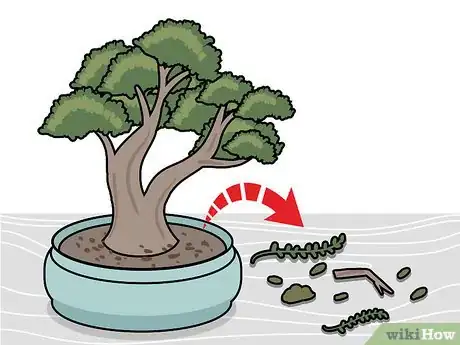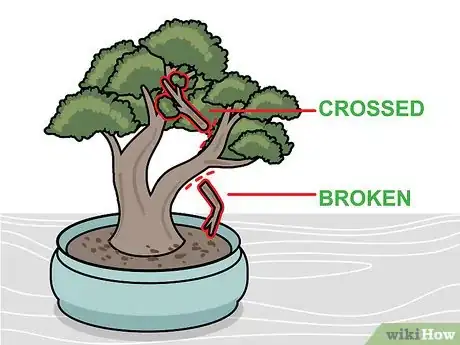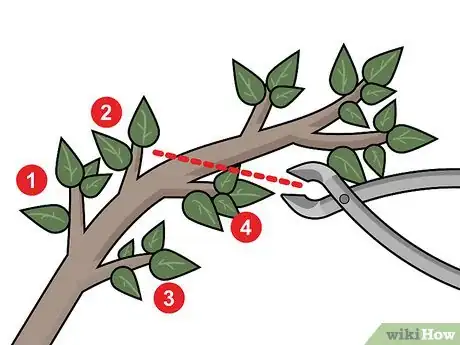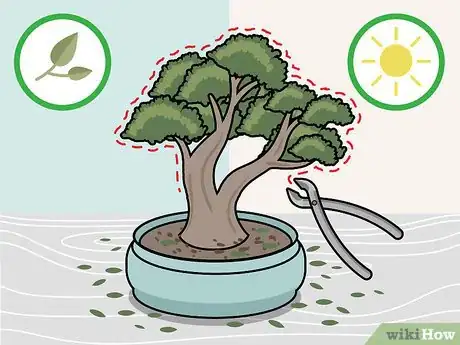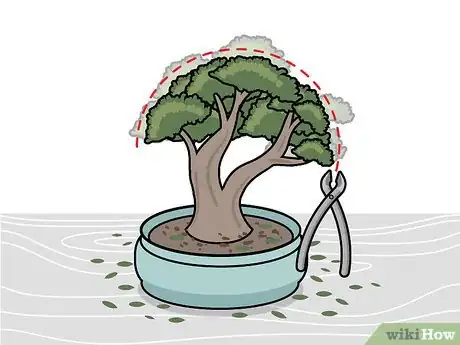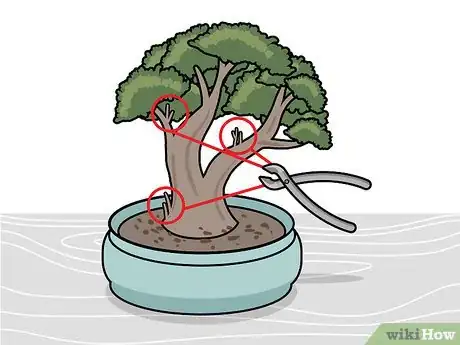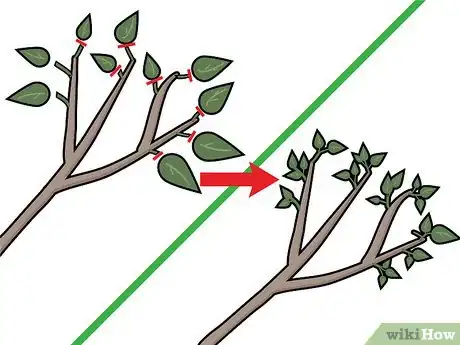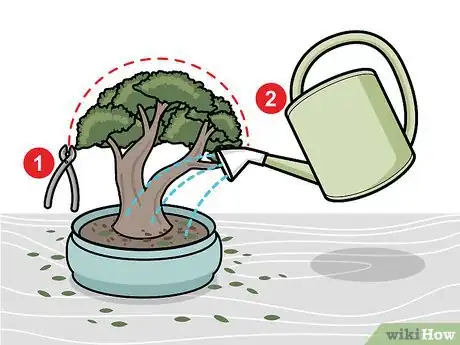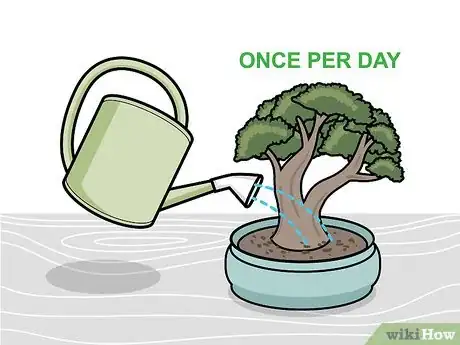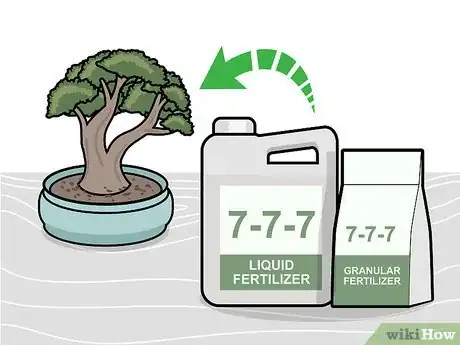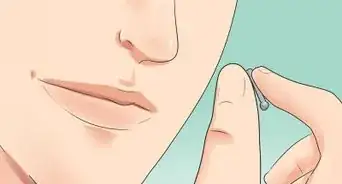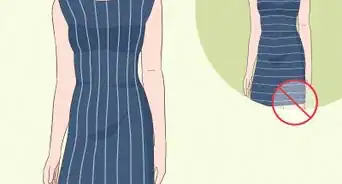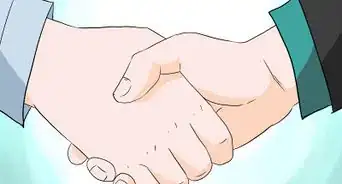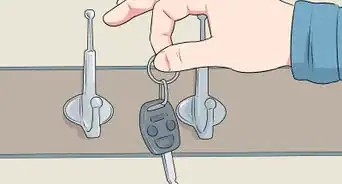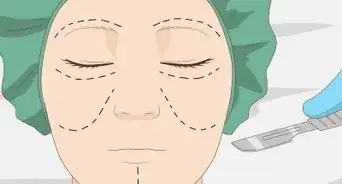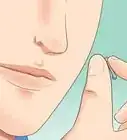This article was co-authored by Melinda Meservy and by wikiHow staff writer, Sophia Latorre. Melinda Meservy is a Plant Specialist and the Owner of Thyme and Place, a botanical boutique offering plants and gifts in Salt Lake City, Utah. Before starting her own business, Melinda worked in process and business improvement and data analytics. Melinda earned a BA in History from the University of Utah, is trained in lean and agile methodologies, and completed her Certified Professional Facilitator certification. Thyme and Place offers indoor plants and containers, a fully stocked potting bench, and tips on plants to suit your space and lifestyle.
There are 12 references cited in this article, which can be found at the bottom of the page.
wikiHow marks an article as reader-approved once it receives enough positive feedback. This article received 12 testimonials and 97% of readers who voted found it helpful, earning it our reader-approved status.
This article has been viewed 376,541 times.
A bonsai tree needs regular pruning to maintain its size and to shape it to a desired style. There are two types of pruning: maintenance pruning, which keeps the tree small and encourages new growth, and structural or stylistic pruning, which shapes the tree and can be an art within itself.[1] Whether you want to prune your bonsai tree for maintenance or style, and no matter what type of bonsai tree you have, you need only a critical eye and bonsai branch or knob cutters to get started.
Steps
Pruning for Maintenance
-
1Remove all the weeds and dead wood or leaves. Look for weeds growing in the bonsai pot as well as dead twigs or leaves on the tree itself. Carefully pluck out the weeds, making sure not to damage the roots of the bonsai. Pick dead twigs or leaves off of the tree and discard them.[2]
-
2Trim crossed and broken branches. Crossed branches rub on each other and leave wounds that may allow pests or diseases into the wood. Broken branches or twigs should be removed to allow the tree to direct its energy toward new growth. Use bonsai branch cutters to cut crossed and broken branches off just above the point where they extend out from the trunk of the tree.[3]
-
3Cut back twigs so they only have 3-4 nodes. The nodes are the joints that leaves grow out of. Once a twig has 6-8 nodes, cut them down so only 3-4 nodes remain. Make a clean cut just above the remaining nodes with branch or knob cutters. This keeps the tree from growing too big and also encourages new growth.[4]
-
4Prune heavily in the spring and summer. Though bonsai trees can be pruned year-round, most of the pruning should be done when the tree is actively growing through the spring and summer. Depending on your location, this may be from March to September.[5]
Doing Structural and Stylistic Pruning
-
1Prune for structure and style from November to February. To ensure you don’t damage the tree too much or stunt its growth, you should only prune for structure and style while the tree is dormant. Typically, this is during the winter months of November to February.[6]
-
2Cut back large branches. Large branches that protrude from the tree can be removed, as can branches with unnatural twists or turns or those that look displeasing to the eye. Cut each branch just above a node in a place that helps to balance the look of the tree. Use branch cutters to make a clean cut.[7]
-
3Thin out the crown and canopy. To allow light to filter through the canopy and reach the lower branches, as well as to shape the canopy to the desired size, trim back the branches or twigs on the top of the tree. Use branch cutters to trim down overgrown branches and shoots so the canopy is rounded and balanced.[8]
-
4Remove suckers from the tree. Suckers are small offshoots that can grow on the base of the trunk or on branches of the tree. These can be plucked off with your fingers to help maintain the balance and aesthetics of the tree. Remove any suckers that you think detract from the overall appeal of the bonsai.[9]
-
5Twist off the buds from conifer trees. To create a more compact shape, use your fingers to pinch out whole needles from areas that are too large or overgrown. Twist the needles to remove them from the twigs. Leave 3 needles on each branch, but feel free to remove the rest. This will encourage more branching on the tree.[10]
-
6Defoliate deciduous trees after new growth has settled in. Defoliation gets rid of old, long leaves and encourages the growth of smaller, more aesthetically-pleasing leaves. Cut away each leaf at the base, leaving the stalk alone. New smaller leaves will grow in their place. This is a risky technique, as defoliating done during the wrong time of year may mean the tree might not never recover.[11]
Caring for Your Bonsai after Pruning
-
1Cover the cuts with wound paste. To prevent too much sap from leaking out and to help the cuts heal, apply bonsai wound paste to the bruises. Squeeze a small amount of the cream onto a gloved finger and smear a light layer over each cut.[12]
- You can find bonsai wound paste at gardening centers and online.
-
2Water the bonsai immediately after pruning. It’s important to water the bonsai deeply after pruning to encourage new growth. Make sure to fully saturate the soil the first time you water the tree after pruning.[13]
-
3Water the tree lightly once per day. You should only water deeply immediately after pruning. Then, water the tree lightly each day. Aim to keep the soil moist, but not soggy. Oversaturating the soil could lead to root rot, so take care not to water the tree too much.[14]
-
4Apply a 7-7-7 fertilizer every 2 weeks while the tree is actively growing. Choose a fertilizer made specifically for bonsai trees, such as a 7-7-7 fertilizer. Use liquid fertilizer for small bonsais, and granular fertilizer for large bonsais. Dilute the fertilizer to half strength, or use half as much as directed on the package.[15]
Expert Q&A
-
QuestionHow do you revive a bonsai tree?
 Maggie MoranMaggie Moran is a Professional Gardener in Pennsylvania.
Maggie MoranMaggie Moran is a Professional Gardener in Pennsylvania.
Home & Garden Specialist First remove any dying branches, then gently dig out the plant including the roots, and remove any dead or decaying roots. Place the plant in a bowl of lukewarm water while you prepare a new pot. Fill the container with a mix of perlite, moss, and potting soil. Place the tree in the soil mixture then place the container in lukewarm water for several minutes. Allow the container to fully drain then place it in a warm and shady location with proper ventilation.
First remove any dying branches, then gently dig out the plant including the roots, and remove any dead or decaying roots. Place the plant in a bowl of lukewarm water while you prepare a new pot. Fill the container with a mix of perlite, moss, and potting soil. Place the tree in the soil mixture then place the container in lukewarm water for several minutes. Allow the container to fully drain then place it in a warm and shady location with proper ventilation. -
QuestionCan you trim a bonsai tree?
 Maggie MoranMaggie Moran is a Professional Gardener in Pennsylvania.
Maggie MoranMaggie Moran is a Professional Gardener in Pennsylvania.
Home & Garden Specialist Use bonsai clippers to properly trim a bonsai tree, then cut minimally to remove dead branches.
Use bonsai clippers to properly trim a bonsai tree, then cut minimally to remove dead branches. -
QuestionHow often do you need to water a bonsai tree?
 Maggie MoranMaggie Moran is a Professional Gardener in Pennsylvania.
Maggie MoranMaggie Moran is a Professional Gardener in Pennsylvania.
Home & Garden Specialist You should water the bonsai when the soil is dry to the touch. Make sure the soil is well draining so the plant is not sitting in water.
You should water the bonsai when the soil is dry to the touch. Make sure the soil is well draining so the plant is not sitting in water.
References
- ↑ Melinda Meservy. Plant Specialist. Expert Interview. 18 August 2020.
- ↑ https://www.bbg.org/gardening/article/the_why_and_when_of_pruning
- ↑ https://gardenerdy.com/juniper-bonsai-pruning
- ↑ https://youtu.be/6raK2bf_yJA?t=5
- ↑ https://gardenerdy.com/juniper-bonsai-pruning
- ↑ https://www.rhs.org.uk/advice/profile?PID=586
- ↑ https://youtu.be/8YJTiDfKnuw?t=56
- ↑ https://youtu.be/8YJTiDfKnuw?t=28
- ↑ https://www.evergreengardenworks.com/quince.htm
- ↑ https://youtu.be/ZJYYKiHHIJI?t=140
- ↑ https://youtu.be/M9LG_SR5RNM?t=7
- ↑ https://youtu.be/NO1w2ETpt6U?t=54
- ↑ https://www.rhs.org.uk/advice/profile?PID=586
- ↑ https://youtu.be/AIt8piVt3P8?t=6
- ↑ https://www.rhs.org.uk/advice/profile?PID=586
- ↑ Melinda Meservy. Plant Specialist. Expert Interview. 18 August 2020.
- ↑ Melinda Meservy. Plant Specialist. Expert Interview. 18 August 2020.
About this article
If you’re pruning a bonsai tree for maintenance, pluck out any weeds growing in the bonsai pot, and remove any dead twigs or leaves on the tree itself. Most of the trimming should be done during the spring and summer, when the tree is actively growing. Use bonsai branch cutters to trim crossed and broken branches just above the point where they extend from the tree trunk. In addition, trim back twigs 6-8 nodes so that only 3-4 nodes remain, which will keep the tree from growing too big. For tips from our horticulture reviewer on how to shape your tree, keep reading!

